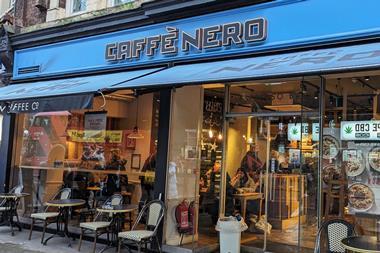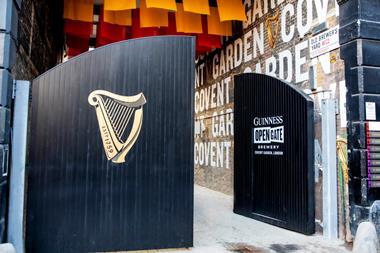It was another story of shrinking profits and falling like-for-like sales from B&M in its full-year results yesterday, as the retailer’s UK like-for-like sales fell by 3.1% in the year to 29 March 2025, ending four consecutive quarters of negative like-for-likes.
It means group revenue growth of 3.7% (to £5.6bn) instead came from new store openings, 45 of which came from B&M UK, alongside a stronger performance in France, which only accounts for 10% of overall group sales. Pre-tax profit fell 13.2% to £431m.
At least this time there were no real surprises. B&M had already done the work to manage expectations, downgrading its earnings guidance twice earlier in the year. Group adjusted EBITDA was £620m, up 0.6% on the previous year and at the top end of its latest guidance, of £605-£625m.
No more excuses
Still, investors are running out of patience, with the company’s share price falling by 16% since the results were announced.
They are also growing tired of the excuses, with B&M blaming “external factors” such as “heightened consumer caution” and “limited real wage growth” for core lower-income consumer groups.
AJ Bell investment director Russ Mould fumes: “Its value-led business model should have thrived in a period where consumers were watching their pennies.
“B&M should have mopped up extra business from people trading down from more expensive options, while also being a shop of choice for cash-strapped individuals wanting bargains.”
There is also irritation at the absence of any commentary on current trading. Mould calls it “unhelpful”, pointing out that it leaves investors “guessing whether the recent sunny weather has driven an improvement in footfall and sales”.
Everyday low pricing
The new store pipeline – including a further 45 openings planned for B&M UK this year, and a long-term target of 1,200 – is growing less impressive.
“Long-term growth will increasingly depend on B&M’s ability to reignite organic sales growth within its existing estate,” says GlobalData retail analyst Emily Scott.
Still, the first step to fixing a problem is recognising it exists, and there are signs of this in B&M’s update. “The Group also recognises that its operational execution could have been better and this is being addressed in current trading plans,” it says.
Fmcg categories in particular “did not meet our internal expectations”.
Much now hinges on correctly identifying why, and it is here that analysts and B&M do not necessarily agree.
“Not having a loyalty scheme is likely to have contributed to shopper drift toward supermarkets that reward frequency and spend,” says Scott, pointing to “the success of similar models for key grocers”, namely Tesco with Clubcard and Sainsbury’s with Nectar.
“Introducing more targeted promotional strategies could help reinvigorate its core proposition,” Scott adds.
There is little sign of agreement in B&M’s plans. Everyday low pricing “remains central” to strategy, it says. Initiatives to strengthen like-for-likes will instead focus on “product ranging, in-store merchandising, and space allocation in key categories like cleaning, health & beauty, and food”.
B&M’s new boss has much to do
Like-for-likes may well be growing in quarter one 2025/26, though the variety discounter may have external factors to thank rather than blame this time. “To our mind it is clear that things have been very good in that period, with the lovely weather a big boost to the non-food side of the business, especially areas such as gardening and DIY,” says a note from Peel Hunt on the results.
“This time last year the weather was rotten, so the LFL in these areas could be really exciting, and the footfall likely brought in by the strong seasonal ranges will surely have bought other items too.”
Peel Hunt thinks the expectation of bad news reflected in the falling share price will not emerge. “There is still much to prove here,” it says, but the new CEO, who starts on 16 June, “inherits a fine business model and a growth machine that has just missed a few beats recently”.
For Mould, the arrival of international retail veteran and former Tesco exec Tjeerd Jegen “cannot come soon enough”.
“Investors will be looking for the new boss to do a thorough review of the business, work out what’s gone wrong, do a ‘kitchen sink’ job and outline a plan to get back on top. B&M is quite a big beast in the world of retail, so this might not be a quick fix,” he adds.
”For now, it’s a waiting game until the new CEO has time to look under the bonnet and fine-tune the strategy.”
If B&M has managed expectations ahead of its full-year results, Jegen now needs to prove it can raise them again.




















No comments yet